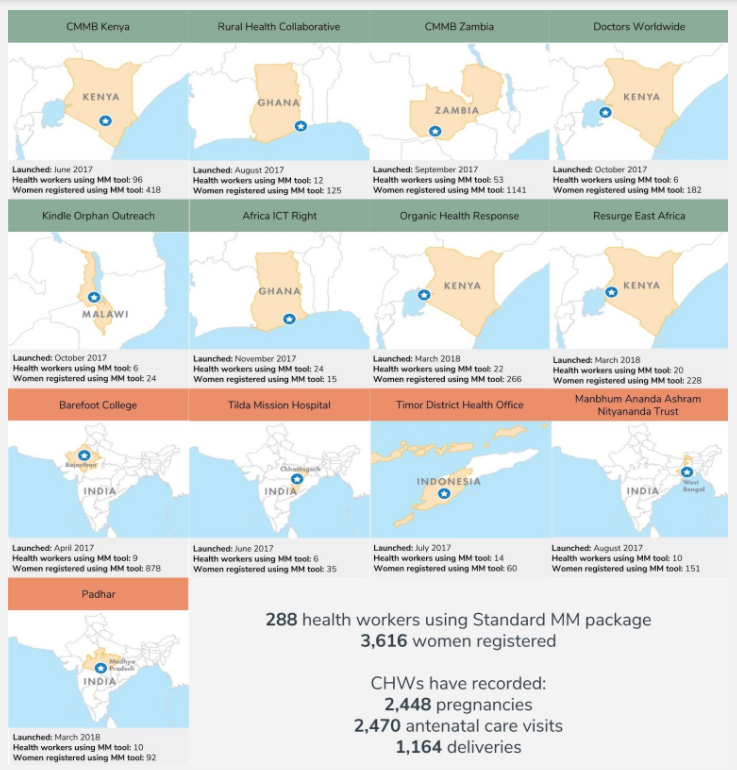MONITORING & EVALUATING IMPACT OF COMMUNITY-BASED MOBILE HEALTH INTERVENTIONS
I had the pleasure of working as an Impact Specialist with a brilliant and fun group of folks at Medic Mobile, a non-profit designing and building open-source software that supports community health workers delivering equitable care in last-mile settings.
In this role, I worked closely with teams across our San Francisco, Kathmandu, Nairobi and Dakar hubs to construct sensible monitoring and impact metrics across primary use cases such as antenatal/postnatal care, integrated childhood case management, immunizations and community-based disease surveillance.
Equity analysis - Data Science for Good.
One of the principles I appreciated most about working at Medic was always grounding our data analyses in Human-Centered Design (HCD) principles. My favorite project there, Equity Lens, modeled how equity indicators affect the likelihood of desired health outcomes, used to target the most at-risk households or beneficiaries within CHW workflows. Given HCD is a core tenant of the organization’s activities since its inception, embedding these principles within not only the overall development process but within the data analysis and interpretation activities was an instrumental way to fully understanding the environmental and social context of analytical outputs.
A description of some of this work was presented at the 2018 Bloomberg Data for Good Exchange in New York (see below)
Data visualization & impact reporting for performance improvement
I worked with countries and institutions to build and interpret dashboards to influence field activities for their community health worker cadre, in addition to reporting back to partners and donors on our overall organizational impact on a monthly and quarterly basis.







